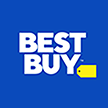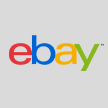
In the world of digital marketing, high audience engagement is one of the key indicators of a successful marketing campaign. Whereas a decade ago, direct-mail marketing used to be the only form of communication between a brand and its consumer, the advent of social platforms like Facebook, Twitter, online forums, and blogs have enabled real-time dialogue to develop between brands and their target audiences, partially breaking the fourth wall (not the screen, thankfully). Conversations between consumers and brands have become ever more important, as brands compete for their customers’ attention, engagement, and ultimately, their loyalty. So how do you successfully build a relationship with your target consumer without the obvious sales pitch? Start with psychology.
Persuading your target audience to take the desired action is tough – unless you take a step away from SEO and consider the psychology behind why people do what they do. This post will review 6 different strategies for boosting online engagement, and the psychological explanation for why it works.
Reciprocity
Did you just offer me an unsolicited FREE gift? I feel like I have to return the favor! (and thank you!)
Free samples are arguably the best representative of why reciprocity is an effective strategy in engaging the consumer. Once you’ve received a free sample and have interacted with it, you are more likely to consider that specific brand amongst others before you purchase a similar product in the future. Likewise, in digital marketing, brands offer content “freebies” in the form of free e-books, whitepapers, webinars, training, and even trial subscriptions to increase their brand exposure. As in all kinds of marketing, awareness is the first step, so be sure to incorporate multiple forms of reciprocity (without overplaying this card) to grab your audience’s attention.
Pro Tip: The trick to reciprocity is in offering something of great value for free to your target consumer base, in exchange for each visitor’s commitment. For example, as a lead generation strategy for our B2B client in the employment industry, we leveraged a content marketing campaign on LinkedIn to promote whitepaper and webinar downloads in exchange for the reader’s email address. Highlighting the monetary value of the free whitepaper ($2500) and the source of expertise (industry specialists), adds to the credibility of the content and its authors, while simultaneously increasing the audience’s desire to engage with the brand.
Commitment and Consistency
I said so, therefore I believe so
Renowned author of “Influence: The Psychology of Persuasion” Cialdini points out that verbal or written commitments, even the smallest ones, are influential in changing people’s attitudes. People tend to associate a lot of pride with their self-image, and it is crucial that their decisions align with the person they want to be seen as. How do you leverage these principles of commitment and consistency in promoting your brand online?
Pro Tip: Small commitments along a progressive scale are ultimately rewarding to the consumer, as long as the messaging is consistent. To engage the audience with your brand, create a consumer persona for your brand, and shape your headline messaging, brand voice and content information according to that persona. What does your target audience identify with, and value? What initial commitments (sign-ups, discounts) are most likely to resonate with your audience’s interests?
Social Proof
All my friends use your products. I’d like to give you a try!
Why do we all slow down while driving past a car accident? Or if we’re walking past a large crowd of people, why do we have the urge to check out the cause of commotion?
We’re wired to follow others’ suit. When looking to purchase a product online, we tend to look at product ratings and customer reviews before we purchase. Consumer psychology suggests that we look for ways to justify and support our decisions throughout the entire consumer decision journey. From the welcome email to the thank you card and referral discount, consistent customer approval and appreciation aid in brand loyalty, and re-purchase.
Pro Tip: An effective method to increase faith in your brand is to highlight statistics, not about your brand specifically, but about your customer interactions with the brand. Number of Facebook followers? Twitter retweets? Testimonials? Content shares and comments? Other content strategies include top 10 lists, best-seller lists and must-haves. These are key performance indicators to assess and develop creative strategy to increase audience engagement online.
Authority
You must know what you’re talking about if you wear a doctor’s white coat
The principle of authority applies not only to professionals in the real world (doctors, police officers, any profession with uniforms), but also to online marketing strategies. Brands leverage this principle by endorsing celebrities to promote their products via testimonials, advertisements or even just native advertisement—for example, the Oscars are a mass marketing strategy for high-end clothing brands like Louis Vuitton and Chanel to promote their recent fashion line via celebrities.
Pro Tip: You don’t have to have a sizeable budget to promote authority in your online marketing strategy. Online and social media influencers have gained authority and are more relatable, and therefore more persuasive to your audience in promoting your brand. Twitter conversations with key industry influencers or guest blog posts by an expert in your field (beauty, software solutions, etc.) are great ways to assert brand authority by the public, for the public.
Liking
Nearly 90% of us buy based on recommendations by people we know
Word-of-mouth still remains the most effective sales strategy, as you are more likely to believe your friend than you are a sales rep in a suit. Liking and Social Proof go hand in hand, and it’s important to incorporate the two when implementing a marketing strategy to complete the consumer decision journey all the way to brand loyalty and advocacy.
Pro Tip: A lot of brands ask the question: How do we get people to start talking about us? Our first step in creating an approachable brand presence is writing website content in first-person that is relatable to your target audience. Second comes a social persona that is active, likeable, and friendly. Revising the “About Us” section of any website is a great way to promote similarities between your brand and your target audience – allowing customers to form their own personal connections with you and find elements within your brand that they find representative of themselves.
Scarcity
If it’s a limited edition for a limited time only, I want in!
As consumers, we are not okay with missing out (that is where we get the term FOMO: Fear of Missing Out). Cialdini points out that we don’t feel comfortable when the freedom to make decisions in our own time, at our own pace, is taken away from us. Consequently, we assign more value to this scarce opportunity. In response, we feel like we have to participate in the event that creates an illusion of perceived scarcity.
Pro Tip: Scarcity generates demand. Promotional campaigns that use “Last Chance” or “2 Day Sale” are effective ways to increase short-term sales (e.g.: airline ticket sales, flash online sales, etc.) Since consumers like to be the source of valuable information, encourage sharing of these scarcity events via social media channels for an added sales increase.
Just as you would develop a relationship with another person in the real world, it is important to consider the entire consumer decision journey when forging bonds with your customers – bridging gaps where your customers’ connection to your business could potentially waver. Put yourselves in their shoes – which of the above principles would encourage you to interact more with the brand, and how? Leave a comment to let us know what you think.
Author: Evangeline Alva
Courtesy: www.thesearchagents.com


















